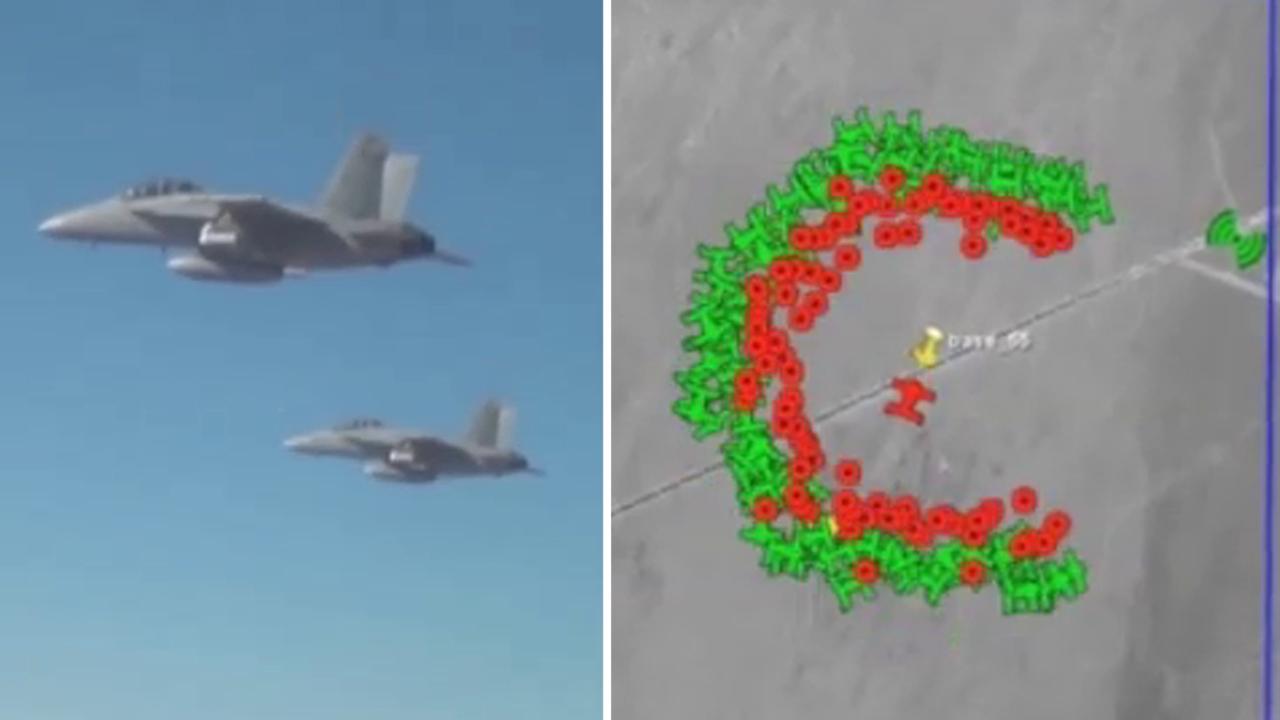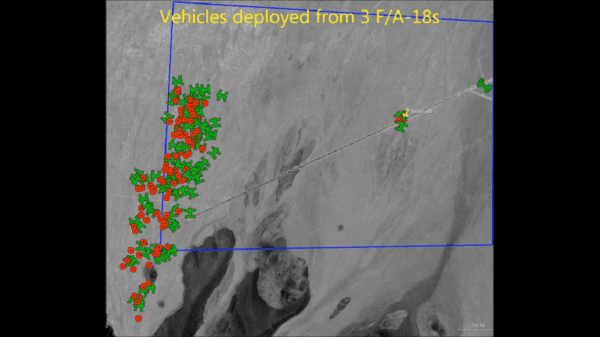The U.S. military has tested a large swarm of micro-drones and most people didn’t even realize it.
A video released by the Department of Defense shows the Perdix micro-UAV swarm being dropped from fighter jets in a test at China Lake, Calif. on Oct. 26, 2016.
Three F/A-18 Super Hornets were deployed to launch the swarm of 103 micro-drones.

Perdix micro-UAV swarm demonstration held at China Lake, Calif. on Oct. 26, 2016. (Secretary of Defense Public Affairs/Released)
The drones, which have a wingspan of 12 inches, operate autonomously and share a distributed brain. They use artificial intelligence to carry out formations and collective decision-making for surveillance purposes.
“Perdix are not pre-programmed synchronized individuals, they are a collective organism, sharing one distributed brain for decision-making and adapting to each other like swarms in nature,” said William Roper, director of the Strategic Capabilities Office, in a DoD statement. “Because every Perdix communicates and collaborates with every other Perdix, the swarm has no leader and can gracefully adapt to drones entering or exiting the team.”

The drones were first designed by students at the Massachusetts Institute of Technology, but were modified for military testing by the scientists and engineers of MIT Lincoln Laboratory starting in 2013.
The video shows one of the first examples of the Pentagon’s use of teams comprised of “small, inexpensive, autonomous systems to perform missions once achieved only by large, expensive ones,” the DoD added.
Roper said the micro-drones will always be accompanied by humans, but will enable them to make quicker and improved decisions.

Perdix micro-UAV swarm demonstration held at China Lake, Calif. on Oct. 26, 2016. (Secretary of Defense Public Affairs/Released)
Perdix micro-UAV swarm demonstration held at China Lake, Calif. on Oct. 26, 2016. (Secretary of Defense Public Affairs/Released)
Then-Secretary of Defense Ash Carter, who created SCO in 2012 said of the 2016 test, “I congratulate the Strategic Capabilities Office for this successful demonstration. This is the kind of cutting-edge innovation that will keep us a step ahead of our adversaries. This demonstration will advance our development of autonomous systems.”
Upon countdown, the drones are released but they are barely visible, and they transition right into place. The map shows where they headed, right on target, to disperse and execute their first mission — then their second, third and fourth missions.
Perdix is now in its sixth generation and can endure possible deployment conditions such as Mach speeds, subzero temperatures, and the shock of ejecting from the fighter jets’ flare dispensers.
Perdix was inspired by the consumer cellphone industry with repetitive design updates to produce innovative generations in batches as large as 1,000.
Take a look at the test flight below:
Source: americanmilitarynews.com








